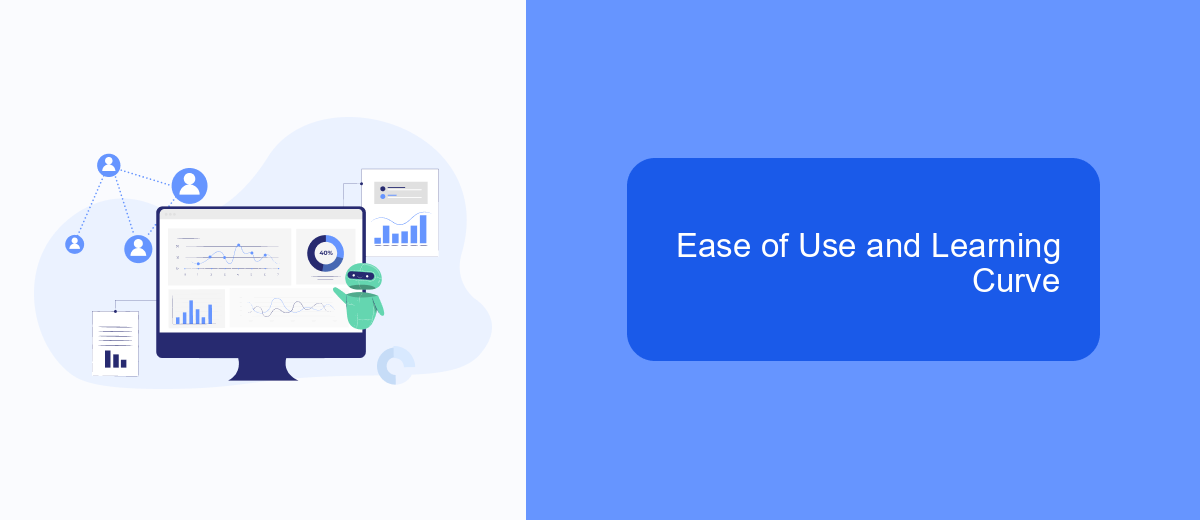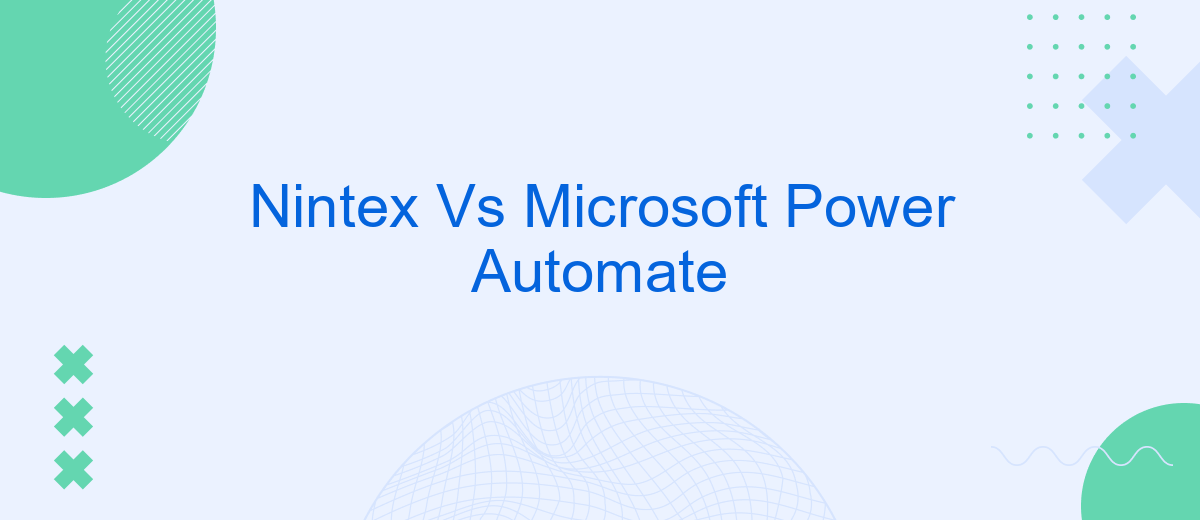Choosing the right automation tool is crucial for streamlining business processes and enhancing productivity. In this article, we compare two leading solutions: Nintex and Microsoft Power Automate. We'll explore their features, ease of use, and integration capabilities to help you determine which platform best suits your organization's needs. Whether you're a small business or a large enterprise, making an informed decision is key.
Introduction
In today's fast-paced digital landscape, businesses constantly seek efficient ways to automate workflows and streamline processes. Two prominent tools in this domain are Nintex and Microsoft Power Automate. Both platforms offer robust features for creating automated workflows, yet they cater to different needs and preferences.
- Nintex: Known for its user-friendly interface and powerful workflow capabilities.
- Microsoft Power Automate: Integrated seamlessly with Microsoft 365 and other Microsoft services.
- SaveMyLeads: Facilitates easy integration between various applications, enhancing automation capabilities.
Choosing the right tool depends on various factors, including existing infrastructure, specific business requirements, and budget constraints. This article aims to provide a comprehensive comparison between Nintex and Microsoft Power Automate, helping you make an informed decision for your organization's automation needs.
Feature Comparison

When comparing Nintex and Microsoft Power Automate, it's essential to look at their feature sets. Nintex offers a comprehensive suite for workflow automation, including advanced form creation, document generation, and process mapping. It is particularly strong in providing a user-friendly interface for designing complex workflows without requiring extensive coding knowledge. Additionally, Nintex supports a variety of integrations with other enterprise systems, making it a versatile tool for businesses seeking to streamline their operations.
Microsoft Power Automate, on the other hand, excels in its seamless integration with the Microsoft ecosystem, including Office 365, SharePoint, and Dynamics 365. This makes it an excellent choice for organizations already invested in Microsoft products. Power Automate provides robust automation capabilities, including AI-driven insights and pre-built templates for common business processes. For those needing to integrate with external services, tools like SaveMyLeads can be invaluable, offering easy setup and management of integrations with various third-party applications, enhancing the overall functionality of Power Automate.
Pricing and Licensing

When comparing Nintex and Microsoft Power Automate, pricing and licensing are crucial factors to consider. Both platforms offer different pricing models that cater to various business needs and scales, making it essential to understand what each provides.
- Nintex: Nintex offers a subscription-based pricing model with various plans tailored for different organizational sizes and requirements. The plans are typically divided into Standard and Enterprise tiers, with pricing based on the number of workflows and users.
- Microsoft Power Automate: Microsoft Power Automate provides a flexible pricing structure that includes per-user and per-flow plans. The per-user plan allows unlimited flows for a fixed monthly fee, while the per-flow plan charges based on the number of flows and runs.
Both platforms also offer free trials, allowing businesses to evaluate their features before committing. Additionally, services like SaveMyLeads can help streamline the integration process, ensuring seamless connectivity between various applications and workflows, which can be a valuable asset when considering the overall cost and efficiency of these automation tools.
Ease of Use and Learning Curve

When comparing Nintex and Microsoft Power Automate, ease of use and the learning curve are crucial factors. Both platforms aim to simplify workflow automation, but they cater to different user bases with varying levels of technical expertise.
Nintex offers a user-friendly interface with drag-and-drop capabilities, making it accessible for users with minimal technical skills. Its visual design tools are intuitive, allowing users to create complex workflows without writing code. Microsoft Power Automate, on the other hand, integrates seamlessly with other Microsoft products, which can be advantageous for users already familiar with the Microsoft ecosystem.
- Nintex: Intuitive drag-and-drop interface
- Microsoft Power Automate: Seamless integration with Microsoft products
- SaveMyLeads: Facilitates easy integration with various services
For those new to workflow automation, Nintex's straightforward design may be more appealing. However, if you're already embedded in the Microsoft environment, Power Automate's familiarity and integration capabilities could provide a smoother learning experience. Additionally, services like SaveMyLeads can further simplify the integration process, making it easier to connect various applications and automate workflows efficiently.
Customer Support and Community
When it comes to customer support and community, both Nintex and Microsoft Power Automate offer robust options to help users navigate their platforms. Nintex provides a comprehensive support system that includes a knowledge base, community forums, and direct support channels. Their community is active and offers a wealth of information, from best practices to troubleshooting tips. Additionally, Nintex offers training programs and certifications to help users become proficient in their tools.
Microsoft Power Automate also excels in customer support and community engagement. It benefits from being part of the larger Microsoft ecosystem, which includes extensive documentation, forums, and a vibrant user community. Power Automate users can easily find tutorials and guides to optimize their workflows. Moreover, services like SaveMyLeads can be integrated with Power Automate to streamline lead management and other business processes, offering an added layer of functionality and support. Both platforms ensure that users have the resources they need to succeed, but the choice may come down to specific needs and preferences.
FAQ
What are the key differences between Nintex and Microsoft Power Automate?
Which platform is easier to use for beginners?
Can both platforms integrate with third-party applications?
How do licensing and pricing compare between Nintex and Microsoft Power Automate?
What should I consider when choosing between Nintex and Microsoft Power Automate?
If you use Facebook Lead Ads, then you should know what it means to regularly download CSV files and transfer data to various support services. How many times a day do you check for new leads in your ad account? How often do you transfer data to a CRM system, task manager, email service or Google Sheets? Try using the SaveMyLeads online connector. This is a no-code tool with which anyone can set up integrations for Facebook. Spend just a few minutes and you will receive real-time notifications in the messenger about new leads. Another 5-10 minutes of work in SML, and the data from the FB advertising account will be automatically transferred to the CRM system or Email service. The SaveMyLeads system will do the routine work for you, and you will surely like it.
